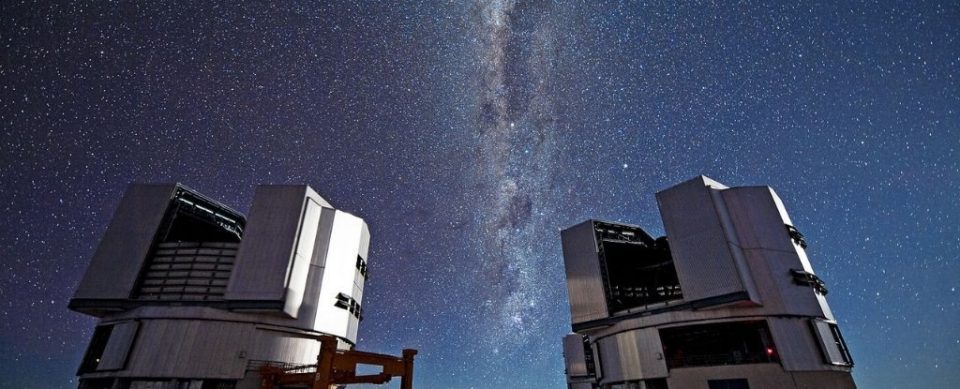The world’s most innovative telescopes were not produced today’s temperature levels, and it’s tinkering our observations of the night sky.
Three decades-worth of information from the Paranal Observatory in northern Chile – house of the European Southern Observatory’s Very Large Telescope (VLT) – has actually exposed a number of methods which climate change is currently affecting huge observations. And a number of methods which it may worsen.
The VLT beings in the Atacama desert, the driest put on Earth outdoors of the Antarctic.
While the rest of the world has actually warmed by an average 1 ° C because the pre-industrial age, the Atacama has actually warmed by 1.5 ° C over the last 4 years.
The VLT merely wasn’t created for such warm conditions. First off, its cooling system does not work effectively if the sunset temperature is above 16 ° C. And yet for many years there have actually been a growing number of events where end-of- day temperature levels surpassed this limit.
This implies then when the dome opens, the outdoors temperature level is warmer than the inner dome, and this can result in a decrease in image resolution due to internal turbulence, something astronomers call ‘dome seeing’.
Essentially, this temperature level triggers turbulence within the dome, which deteriorates the image quality and triggers blurring.
Outside the dome, environment modification is likewise affecting turbulence in the environment, and the authors of this brand-new research study saw a boost in turbulence in the air near the ground, which likewise triggered increased blurriness in images.
Given current building and construction modifications in the landscape, the group can’t straight connect this modification to worldwide warming, however it does speak with a bigger possible risk as our planet quickly warms.
Installed at the telescope are likewise many advanced instruments, which are delicate to regional climatic modifications.
Even though the Atacama is a desert, this area is still carefully connected to El Ni ño occasions and summertime monsoons, both of which are anticipated to heighten under future environment modifications. But in order to take infrared observations of the night sky, there requires to be low water vapor material in the air.
The southern subtropical jet stream, which is, in turn, impacted by El Ni ño is likewise accountable for triggering a ‘wind-driven halo’ – where climatic turbulence conditions differ so rapidly, the telescope’s control system can’t remedy for them.
“This limits the contrast capabilities of the instrument and could potentially limit exoplanet studies,” the authors explain.
“An increase in water vapor in the atmosphere moreover could lead to a reduction of the astronomical signal.”
Relative humidity and cloud protection can likewise tinker submillimetre and radio wavelength observations, and while there are tips in the information that the Atacama will end up being drier in the future, we still require much more research study on the regional and worldwide environment and all its numerous intricacies prior to we can state for sure.
If the world warms by an additional 4 ° C prior to completion of the century – a worst-case situation – the group of astronomers, environment researchers and meteorologists state our images of the night sky will most likely just get blurrier.
That’s why we must construct future telescopes with severe warming situations in mind, they state, due to the fact that otherwise our innovation will not date well.
“Each telescope site is likely to have its own microclimate that calls for individual study,” the group confesses, “but we have highlighted three different areas – dome seeing, surface layer turbulence and the wind-driven halo effect – that will have an increasingly detrimental impact on astronomical observations at Paranal as climate change worsens.”
And the authors have another message, too. Their paper signs up with 6 other posts in the existing concern of Nature Astronomy, devoted to raising awareness about environment modification and how it impacts our view of space.
While astronomy isn’t frequently connected to environment modification, planetary researchers and astrobiologists can bring distinct viewpoints to research study on our own planet.
In the past, astronomers have actually revealed concern over geoengineering services, which they stress might lighten up or cloud the night sky and make crisp huge observations a lot more tough.
“[A]stronomers know that the origin of life on Earth was a complex process made possible only by the coincidence of extremely rare circumstances,” the research study’s news release explains.
“There is no second Earth in our neighborhood.”
The research study was released inNature Astronomy


